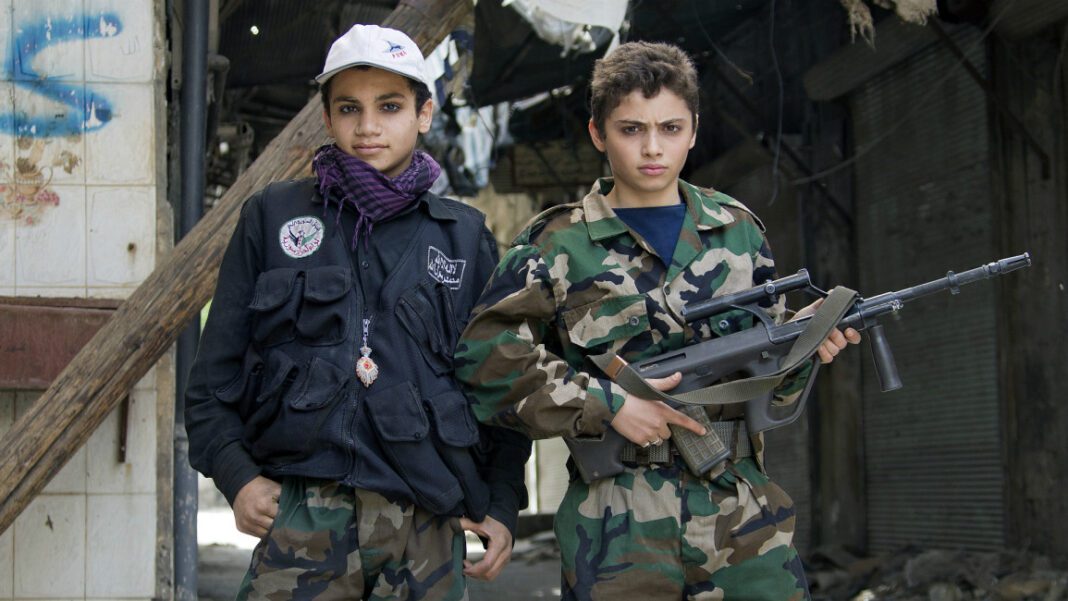The US has acknowledged that its allied Kurdish militias in Syria are still recruiting and using child soldiers. Despite years of warnings and rebukes, the practice continues. The US State Department’s 2024 Trafficking in Persons Report, out Monday, notes this ongoing problem.
Kurdish Militias and Child Soldiers
The Kurdish militias in north-east Syria, supported by the US military, are under the umbrella of the Syrian Democratic Forces (SDF). They are still recruiting and using children as soldiers in their areas. The report says an international organization reported SDF-affiliated groups recruited and used children in 2022 and 2023.
The Syrian Conflict
The conflict in Syria began in 2011 during Arab Spring protests. It quickly escalated thereafter. This turned into brutal civil war. The main fight is between President Bashar al-Assad’s government and various rebel groups. Assad’s forces have support of Russia and Iran. Rebel groups are backed by countries like the United States Turkey and Gulf states. The conflict is complex as many sides are fighting for control.
Islamic State of Iraq and Syria (ISIS) a Sunni jihadist group emerged during the war. It captured large areas of Syria and Iraq. Kurdish forces mainly the Syrian Democratic Forces (SDF) fought against ISIS with the U.S. support. They now control parts of northern and eastern Syria. Turkey opposes the Kurdish forces due to links with Kurdish militants in Turkey. This has led to further clashes and instability in the region always remains high.
The war has caused immense suffering. Over 500,000 people have died and millions have fled their homes. Many Syrians live in refugee camps in neighboring countries. Some have sought asylum in Europe. The infrastructure in Syria is destroyed. This has led to shortages of food water and medical care. Despite reduced fighting peace remains elusive. International efforts to end the conflict have yet to succeed.
Failure to Implement UN Plan
Despite the militias agreeing to implement the UN Security Council’s plan, they have not stopped the recruitment and use of children. The plan is to demobilize children in SDF ranks but the practice continues. This shows the difficulty of enforcing international agreements in conflict areas.
Kurdish forces training in Qandil Mountains
According to international and non-governmental organisations, children recruited by Kurdish forces have been trained in the Qandil Mountains of Iraq, the State Department report says. This is part of the systematic use of child soldiers by these groups.
The report also mentions the Patriotic Revolutionary Youth Movement (YDG-H). This youth wing of the Kurdistan Workers Party (PKK) is still recruiting and training children as young as 12 years old. They are active in north-west Syria and recruit children through fake ads for educational courses in north-east Syria.
UN Report on Forced Integration
The US government’s report comes after a UN report last month. The UN report said Kurdish militias in Syria and their affiliated fighters forced 231 children into their ranks in 2023. This is a huge number and shows the child soldier recruitment continues.
International Response and Measures
US-backed militias using child soldiers raises big ethical and legal questions. The international community, including the US, has repeatedly condemned child soldiers. Although this report shows more efforts to be done to address the issue.
The State Department report says stronger measures are needed to prevent child soldier recruitment and use. That means more monitoring and enforcement. And support for former child soldiers rehabilitation and reintegration programs.
Addressing Kurdish Militias’ Recruitment of Child Soldiers
The recruitment and use of child soldiers by US-backed militias in Syria is a grave concern. In spite of international agreements and repeated warnings yet the practice continues. The US and the international community must take stronger actions to end this illegal practice and protect the rights and futures of these children. The latest reports underscore the urgent need for effective interventions and long-term solutions to address the exploitation of children in conflict zones.





